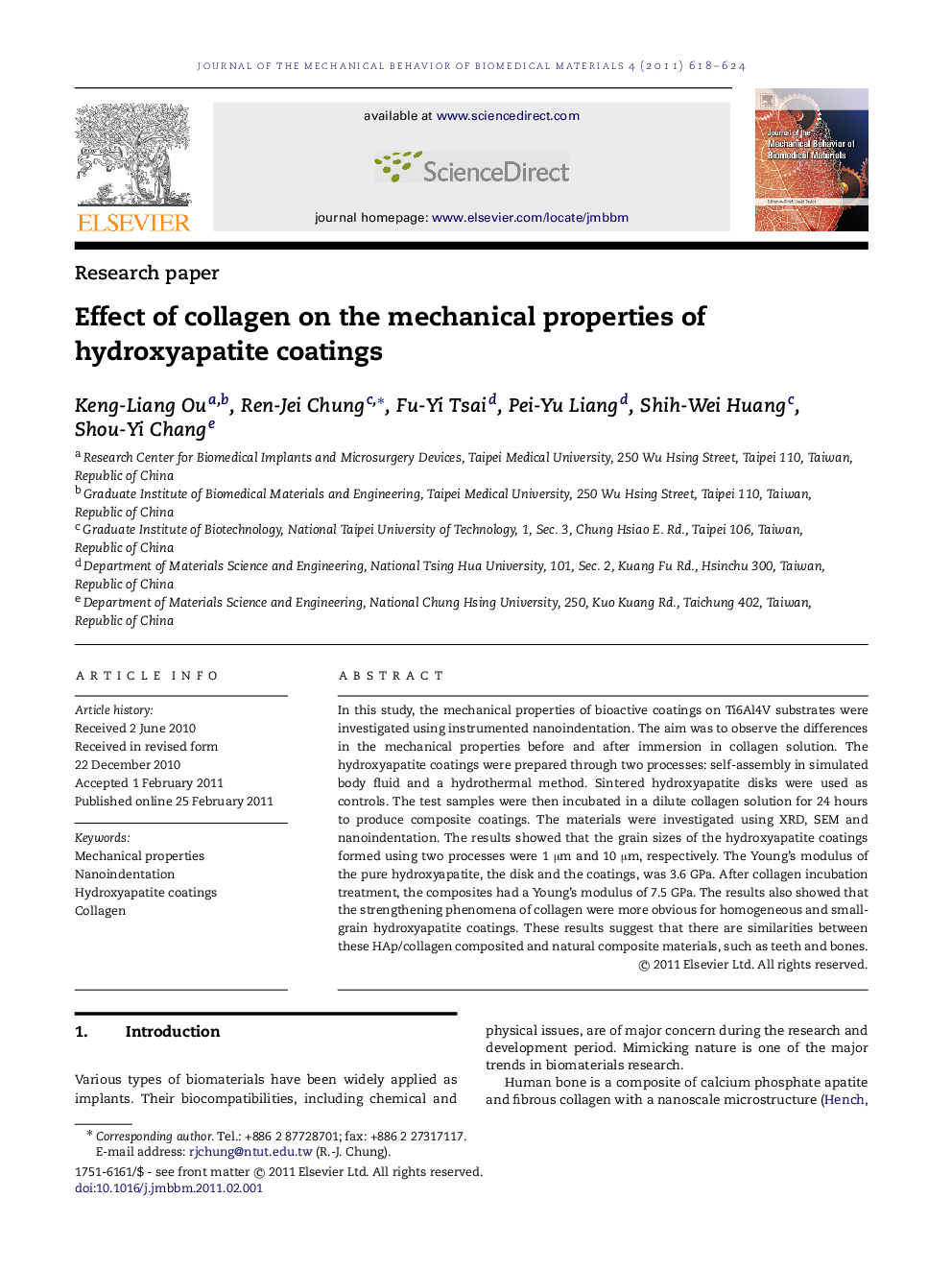| Article ID | Journal | Published Year | Pages | File Type |
|---|---|---|---|---|
| 811220 | Journal of the Mechanical Behavior of Biomedical Materials | 2011 | 7 Pages |
In this study, the mechanical properties of bioactive coatings on Ti6Al4V substrates were investigated using instrumented nanoindentation. The aim was to observe the differences in the mechanical properties before and after immersion in collagen solution. The hydroxyapatite coatings were prepared through two processes: self-assembly in simulated body fluid and a hydrothermal method. Sintered hydroxyapatite disks were used as controls. The test samples were then incubated in a dilute collagen solution for 24 hours to produce composite coatings. The materials were investigated using XRD, SEM and nanoindentation. The results showed that the grain sizes of the hydroxyapatite coatings formed using two processes were 1 μm and 10 μm, respectively. The Young’s modulus of the pure hydroxyapatite, the disk and the coatings, was 3.6 GPa. After collagen incubation treatment, the composites had a Young’s modulus of 7.5 GPa. The results also showed that the strengthening phenomena of collagen were more obvious for homogeneous and small-grain hydroxyapatite coatings. These results suggest that there are similarities between these HAp/collagen composited and natural composite materials, such as teeth and bones.
Graphical abstractFigure optionsDownload full-size imageDownload high-quality image (178 K)Download as PowerPoint slideResearch highlights► Human bone is a composite of calcium phosphate apatite and fibrous collagen with a nanoscale microstructure. ► After collagen conjugation, the hydroxyapatite with a sub-micron structure was strengthened. ► Designing biomimetic structures promise to be unique direction in novel material design.
